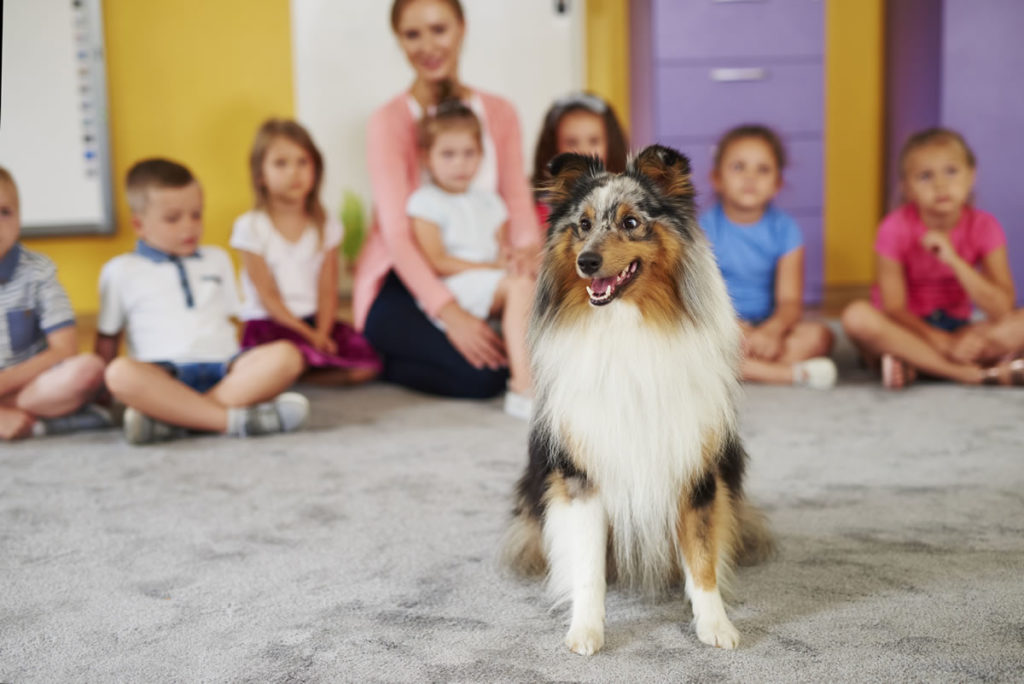The health benefits that being in the company of and enjoying a dog can have for people are not a secret but no one, nor is it something new. However, what is recent are the claims that exist about the benefits that dogs could have with respect to children’s cognitive abilities , such as memory, perception, attention or language, coming from spaces such as the University of Navarra , which in conjunction with the so-called “Biak Bat” association has already launched some school projects of this type with excellent results.
For this reason, and in order to understand it better, we want to talk to you in this article about the possible benefits of having dogs for the little ones and, more specifically, about how their presence in the classroom could benefit students and their abilities. cognitive.
Sociable dogs for child therapy
There is a type of dog called “therapy dogs” or “guide dogs”, whose concept is related to breeds considered highly sociable, such as the Golden Retriever, an ideal dog for children. For this reason, when it comes to teaching and doing therapies with children, it is very important to carefully choose the dogs that will participate in them, always seeking the opinion of professionals such as the veterinarian, of course. And it is necessary that the dog has been initiated in socialization from a puppy so that its role in possible therapies, especially with children, can be much more effective and positive.

If, in addition, one can also make sure that during the first 12 weeks of life the dog to choose had enough contact and attention from its mother, without a doubt this will help the dog to develop empathy towards other living beings easier. , including humans.
Benefits of therapy dogs in the classroom
Today we also know that the benefits that dogs can bring to different types of therapies can also be acquired in the classroom, if one day, or to carry them out, dogs are allowed to enter schools.
Do you want to know all the positive things that would have to be able to do different dynamics with dogs in the classroom?
- Help children overcome trauma
Dogs help reduce stress for children who go through trauma or who live with stress in their daily lives in the classroom or at home for different reasons. Keep in mind that children can easily be stressed by everyday situations such as a simple move, the dismissal of a friend, the death of a pet, the separation of parents or many other reasons. It is true that we cannot fight against the setbacks of life and children, like others, must go through them, but we should consider the fact that the simple presence of a dog in class could help alleviate many of them.
- Decrease anxiety in autistic children
One of the symptoms of autistic children is stress, which can produce situations as common for others as being in society. In this sense, it should be noted that the way an animal socializes is different from the way people do, which is why it is also (and as a general rule) much less intimidating for children who suffer from this problem . A sociable dog allows them to release the stress generated by managing to better develop their social skills at the same time and also reducing their anxiety and distress.
- Develop the value of responsibility
If the care of a pet by children were established within the program of a class, as is already applied in many schools around the world, it could be achieved with this to instill in the little ones the feeling and value of responsibility and of how important it is to take care of a living being without this implying a difficult task or an additional burden for parents every day. These programs can be established through the care of dogs during a weekend, which would happen one weekend at each child’s home, always with proper supervision. This way of working, which could also be reduced to simple workshops in the classroom, could be something that serves to teach many values to children, as well as to allow abandoned (and properly cared for) foster dogs to come into contact again with other living beings.
This type of activity would allow all children to be able to interact equally with animals from a very young age, regardless of whether some have pets at home or not, and would also allow them to learn to be more sensitive and tolerant people in a fun way, as well as to overcome the fear that certain young children feel when they see a dog because they consider it something quite unknown or fight against bullying .
- Promote love for the animal genre
Recognition and respect for the animal gender begins by developing in the child the feeling of empathy for animals . And there is no better place for this than the school, where the teacher can explain to the students things like their needs for affection, their benefits for the human being, the need for their care, etc. The benefits are guaranteed… Has something like this already been tried in your school?











































































































